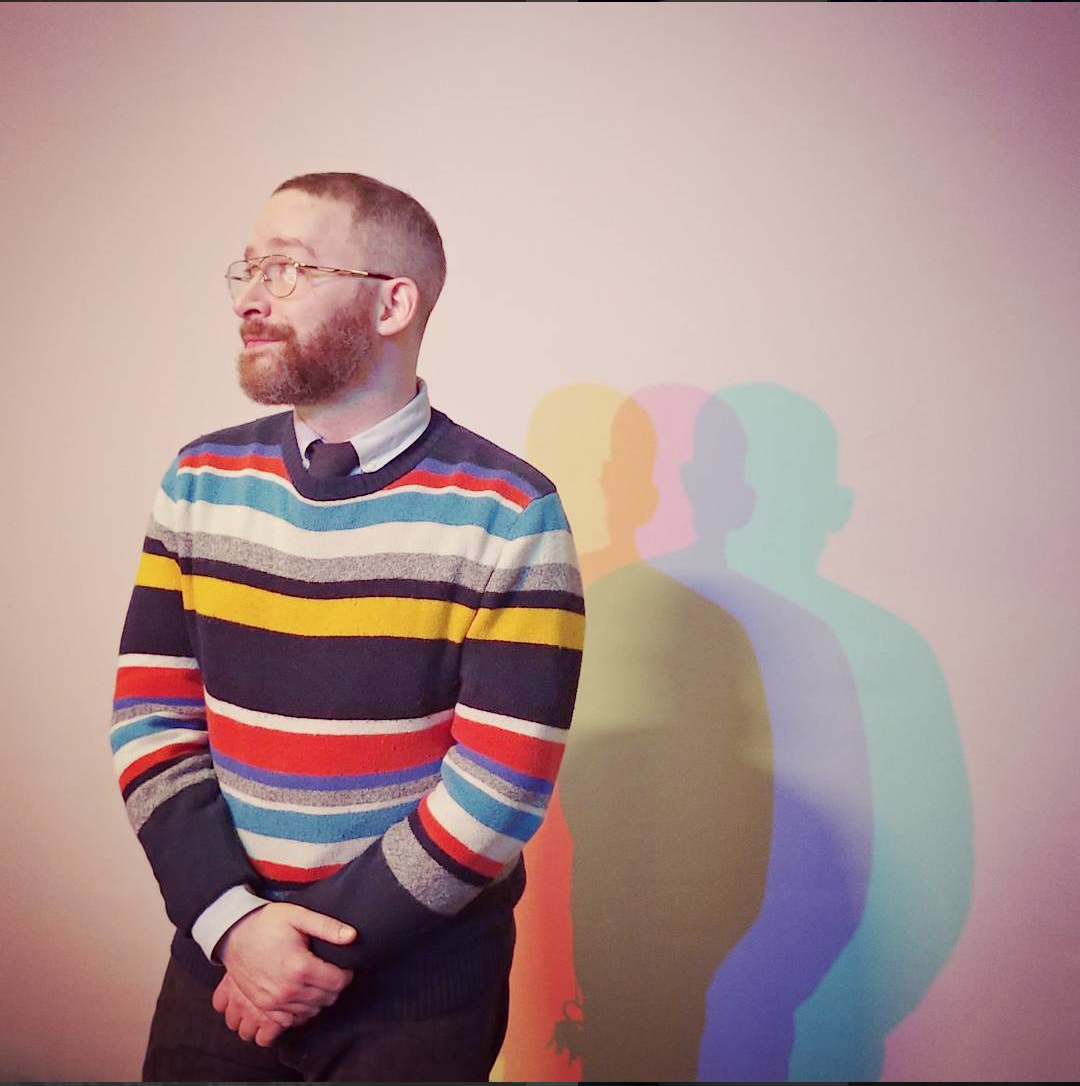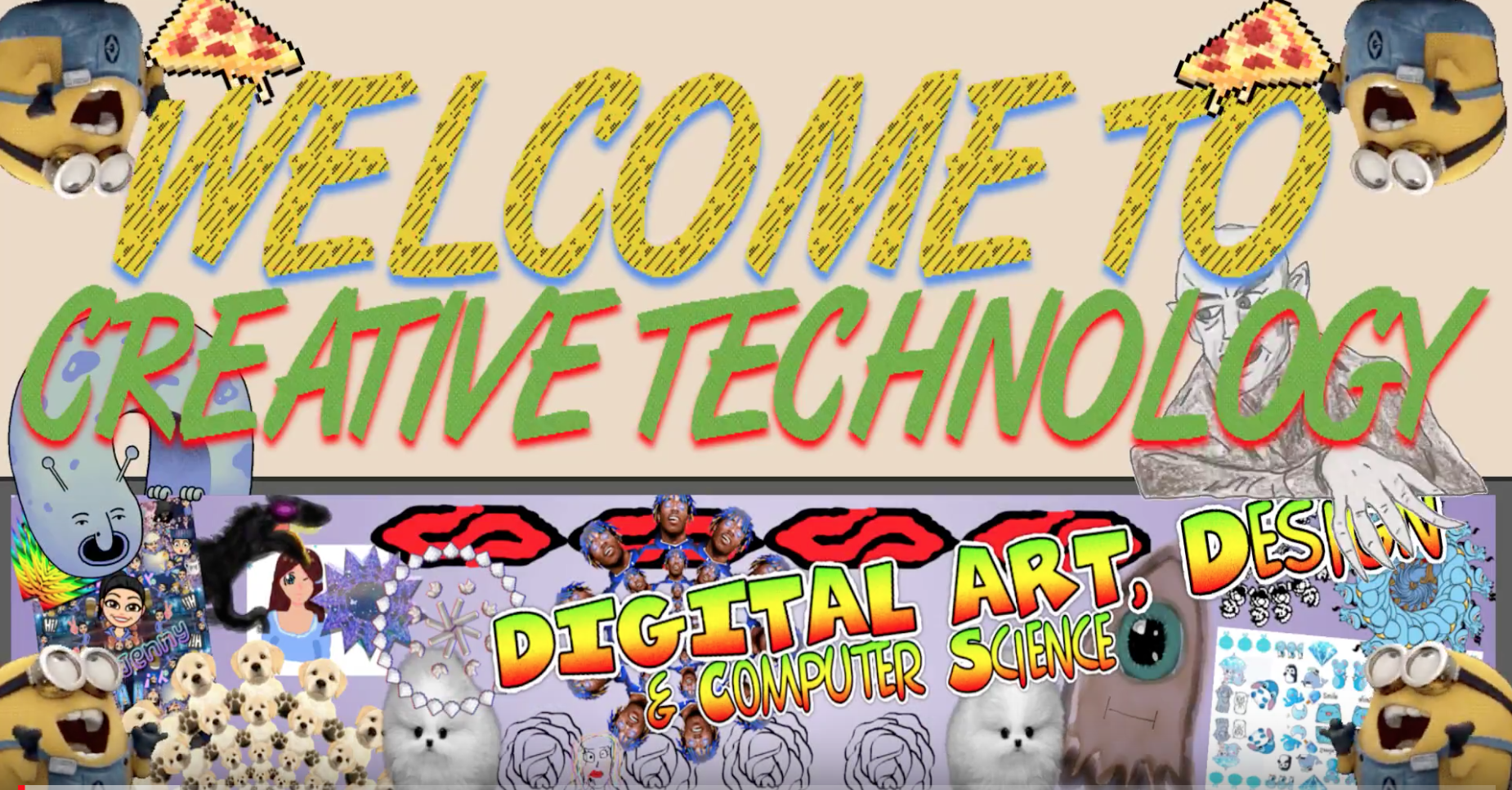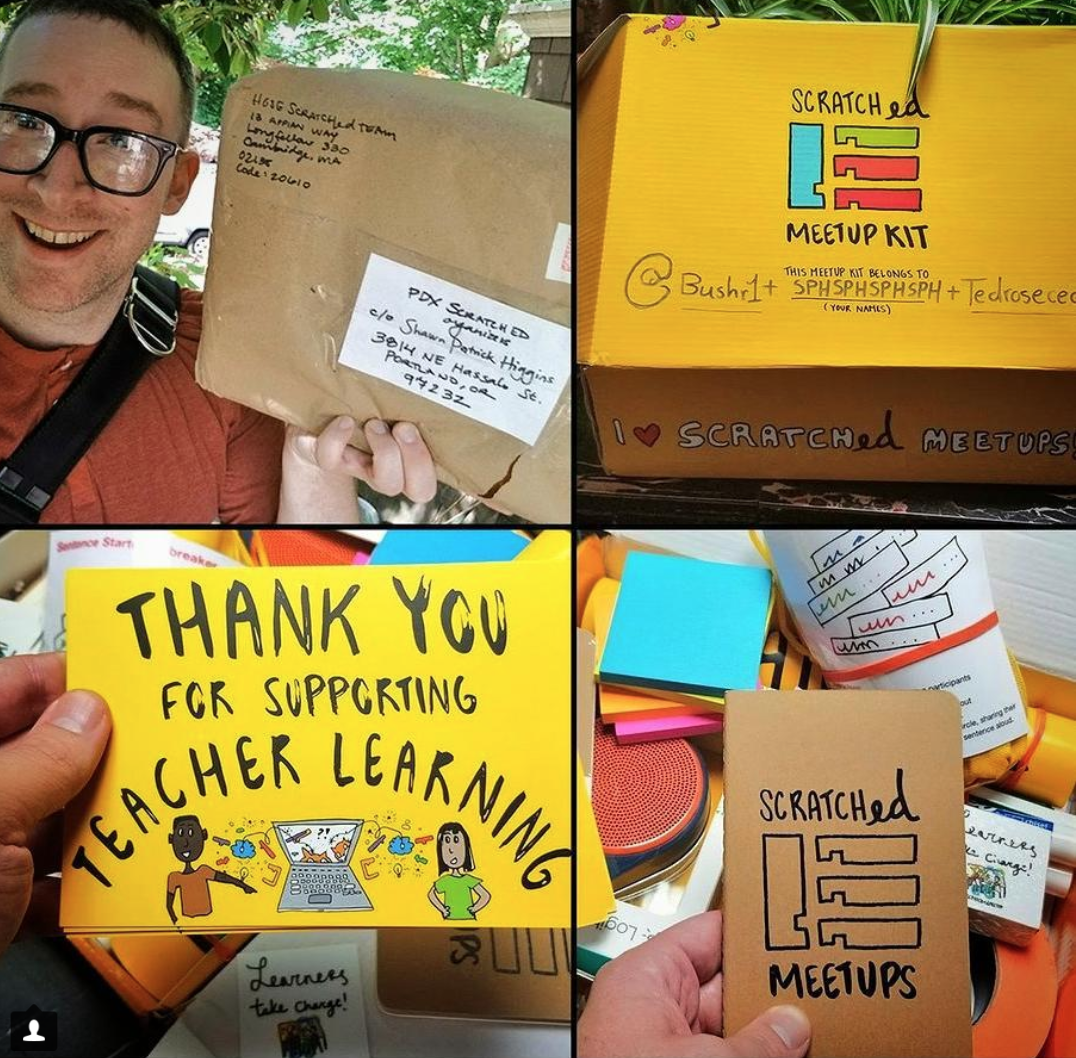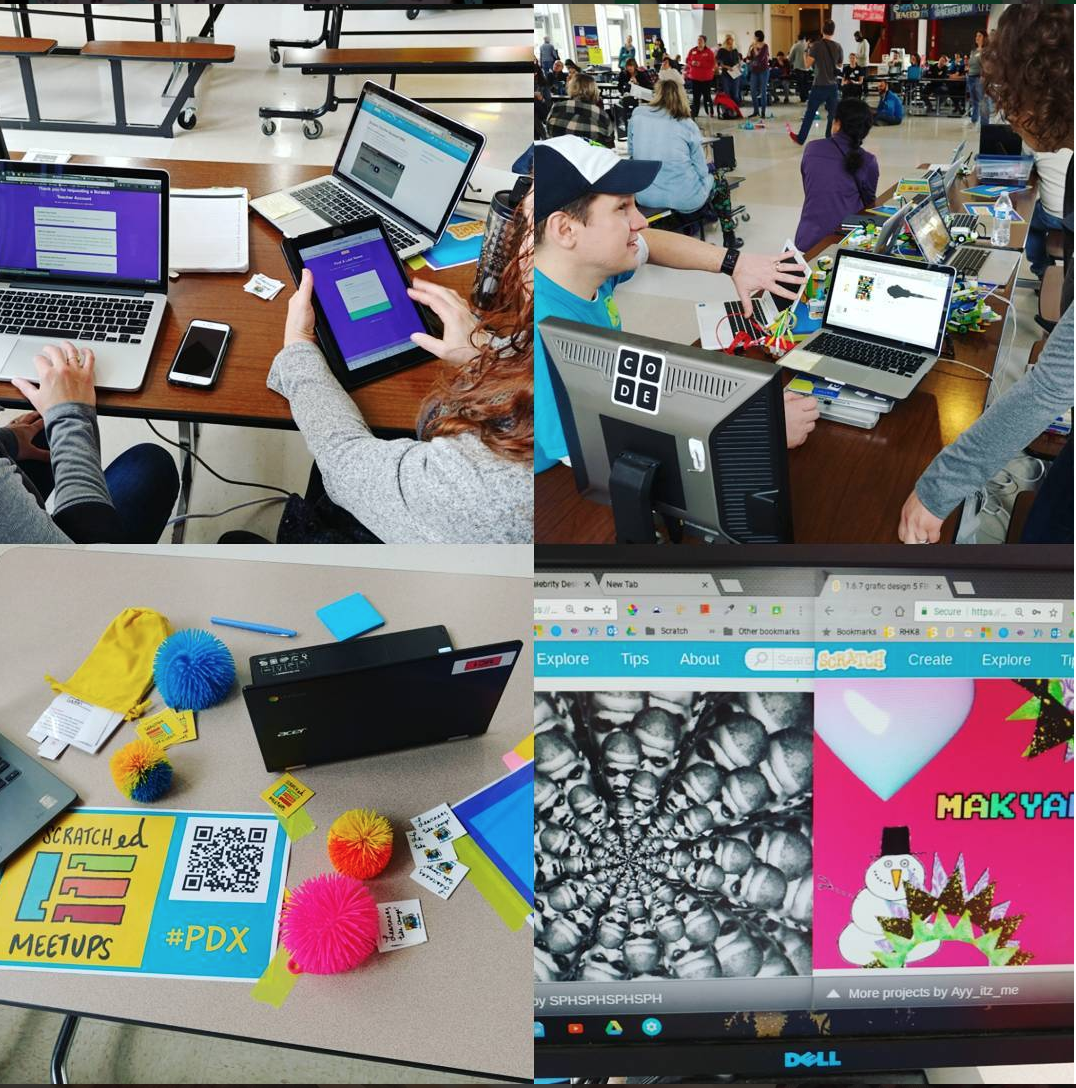Creating Digital Animation in Scratch with SPH
Contributed by
ScratchEd Team, October 03, 2018

From Typing to Transforming
SPH's adventures in teaching computing began in his first year as an assistant K-12 middle school CS educator at The SEI Academy, a local charter school. At the time, computer programming was still a fresh subject in schools, and many of his students were engaged in rote and scripted learning: "I remember there was a lot of typing, which was ubiquitous in technology classrooms." SPH recalls that he and the lead CS teacher had students create an HTML website by typing out code from a sheet of paper.
It wasn't until he began investigating the more creative aspects of computing that SPH found a more organic relationship to the subject. He notes, "It was really only in the last maybe four years, five years, that I started realizing what the actual intention of Scratch was, and how coding could support the creation of motion graphics and give you more control over the things you create." From creating storyboards to motion graphics to games and other animations, SPH's Computer Science and Technology class went from typing to transforming—Computer Science became a means to create, play, and make art come to life.
What's more, SPH has integrated his background in video production with his teaching practice, creating tutorial videos for many of the lessons he brings to the classroom. Below, he offers instruction and guidance to support students in developing their first motion graphic projects:
Designing for Creative Computing In the Classroom
When students ask SPH for advice on how best to go about creating their projects, he recommends they focus on four core dimensions:
"To be successful creative digital makers we have four pillars in class.
1) We want to make it look good (and that's graphic design!)
2) We want to make it sound good (and that's audio editing!)
3) We want to make it work good (and that's coding and logic!)
4) We want to show it off right to the people who matter (and that's social media and presenting skills)
Gaining creative experience and building a personal relationship is how you succeed as a digital maker!"

PBS Digital Innovator and ScratchEd Meetup organizer Shawn Patrick Higgins (SPH) is supporting students in turning static works of art into lively animations. A former film and video educator at Portland Community Media, SPH has spent the last eight years bringing his love of digital storytelling into the middle school classroom.

From Typing to Transforming
SPH's adventures in teaching computing began in his first year as an assistant K-12 middle school CS educator at The SEI Academy, a local charter school. At the time, computer programming was still a fresh subject in schools, and many of his students were engaged in rote and scripted learning: "I remember there was a lot of typing, which was ubiquitous in technology classrooms." SPH recalls that he and the lead CS teacher had students create an HTML website by typing out code from a sheet of paper.
It wasn't until he began investigating the more creative aspects of computing that SPH found a more organic relationship to the subject. He notes, "It was really only in the last maybe four years, five years, that I started realizing what the actual intention of Scratch was, and how coding could support the creation of motion graphics and give you more control over the things you create." From creating storyboards to motion graphics to games and other animations, SPH's Computer Science and Technology class went from typing to transforming—Computer Science became a means to create, play, and make art come to life.
What's more, SPH has integrated his background in video production with his teaching practice, creating tutorial videos for many of the lessons he brings to the classroom. Below, he offers instruction and guidance to support students in developing their first motion graphic projects:
Designing for Creative Computing In the Classroom
When students ask SPH for advice on how best to go about creating their projects, he recommends they focus on four core dimensions:
"To be successful creative digital makers we have four pillars in class.
1) We want to make it look good (and that's graphic design!)
2) We want to make it sound good (and that's audio editing!)
3) We want to make it work good (and that's coding and logic!)
4) We want to show it off right to the people who matter (and that's social media and presenting skills)
Gaining creative experience and building a personal relationship is how you succeed as a digital maker!"
SPH emphasizes the value of sharing in the online community. He has found that one of the most special aspects of teaching with Scratch has come from students' abilities to see not only what their peers have created, but also their siblings, and the work of generations (or grades) before them, and "there's this legacy of awesome stuff being made."
In order to support a number of students learning at different paces and levels in one classroom, SPH creates videos for his lesson plans which walk students through a particular project, just enough for them to be able to grasp the core computational concepts underlying what they will make. As students begin tinkering with their own projects, SPH uses a 'red cup/ green cup' signaling method to make sure students with questions are seen. Rather than running around to students while other students wait with their hands up, SPH encourages a signaling system, which supports students not only in helping each other (if you see a red cup and the teacher is with someone else, try to help them!) but also in continuing to tinker until they receive help.
Supporting Teacher Learning


SPH is also a co-organizer for the PDX ScratchEd Meetup, where educators come together every few months to make, reflect, play, and share about their experiences teaching with Scratch. You can learn more about Meetups here!
We're so excited to see all the beautiful things that SPH continues to make through the year. To keep up with all the awesome stuff SPH is making in his classroom, follow him on Twitter and Instagram.
This article was originally published on 9/27/2018
In order to support a number of students learning at different paces and levels in one classroom, SPH creates videos for his lesson plans which walk students through a particular project, just enough for them to be able to grasp the core computational concepts underlying what they will make. As students begin tinkering with their own projects, SPH uses a 'red cup/ green cup' signaling method to make sure students with questions are seen. Rather than running around to students while other students wait with their hands up, SPH encourages a signaling system, which supports students not only in helping each other (if you see a red cup and the teacher is with someone else, try to help them!) but also in continuing to tinker until they receive help.
Supporting Teacher Learning


SPH is also a co-organizer for the PDX ScratchEd Meetup, where educators come together every few months to make, reflect, play, and share about their experiences teaching with Scratch. You can learn more about Meetups here!
We're so excited to see all the beautiful things that SPH continues to make through the year. To keep up with all the awesome stuff SPH is making in his classroom, follow him on Twitter and Instagram.

